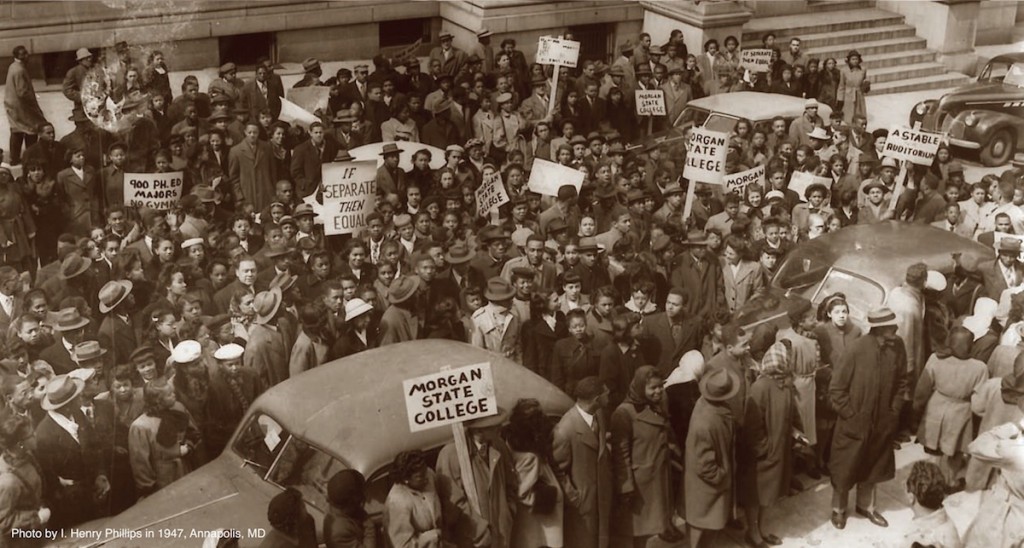
Morgan State College students demonstrate at state capitol
Since their founding in the twilight of the Civil War, the nation’s historically Black Colleges and Universities (HBCUs) have fulfilled an important mission in educating generations of Black citizens. These institutions, primarily established in southern states, are rooted in the promise of integration but were the place of only resort when Jim Crow laws denied Blacks admission to traditionally white institutions (TWIs). Even after the formal end of legal or de jure segregation, HBCU’s continue to be campuses that offer opportunities when implicit bias and covert practices subject Black students to hostility and benign neglect on white campuses. The success of HBCUs is empirically proven and its alumni have not only contributed much to American society but has altered the nation’s landscape by breaking barriers and challenging systemic racism.
Historically Black colleges and universities traditionally take Black students who often come from economically disadvantaged backgrounds and require some supplemental academic support, and transform them into strong students and scholars. Today, many of the students who enroll in HBCUs have the academic credentials to be admitted to traditionally white institutions but choose a Black college education for its intellectual and cultural value. With growing numbers of foreign and Latino students discovering HBCUs, these institutions are becoming a closer approximation than traditionally white institutions of what the world looks like in the 21st century.
It is the very success of our nation’s Black colleges that have made them targets. It is true that some of these schools have been undermined by bad management and internal politics that betray their missions, but they have also overwhelmingly been underserved by their respective state governments. While some of these schools have been challenged by circumstances that beset many institutions of higher learning – enrollment fluctuations, financing facilities, fundraising and a changing world – many HBCUs have also been burdened by the intentional efforts of state legislatures to facilitate their demise. This has been the case despite the earnest efforts of Black colleges to make their campuses attractive learning environments for all students and to try to attract a larger share of white students. In states throughout the south HBCUs have witnessed almost every conceivable device imaginable out of state capitals to orchestrate their failure.
The Maryland HBCU Experience
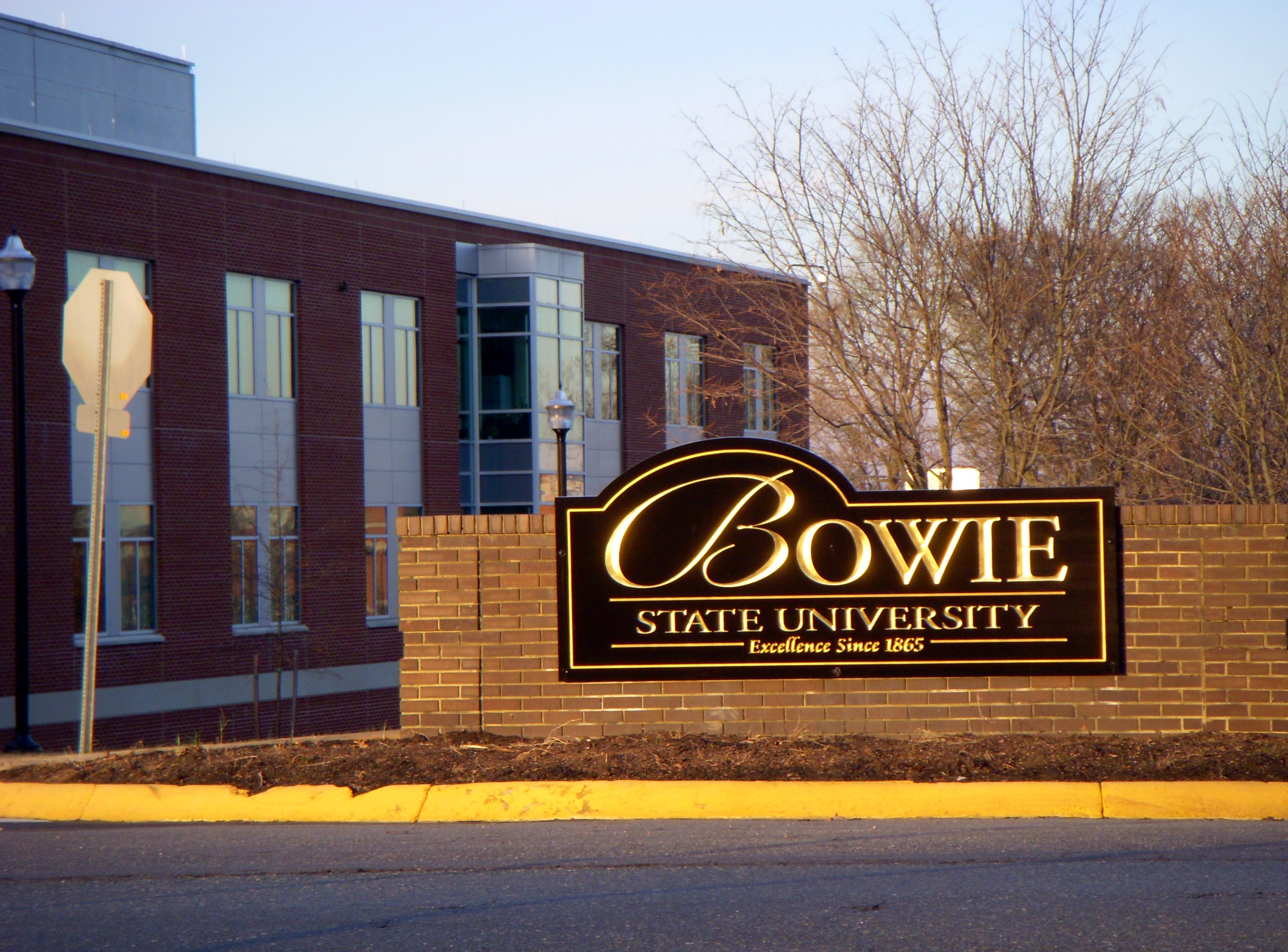 The state of Maryland is home to four historically Black colleges and universities – Bowie State University (1865), Morgan State University (1867), the University of Maryland Eastern Shore - formerly Maryland State College (1886) and Coppin State University (1900). Bowie State is the oldest HBCU while Morgan State University can claim title as the most storied of the four, with both Morgan and Coppin State located in the city of Baltimore. Of the four, Morgan State University is the only one that operates under a Board of Trustees independent of the University of Maryland system. That arrangement is the result of a fierce struggle by Morgan State to retain its historic mission and some degree of self-determination over its development. At one point, in the 1980s there was a proposal pushed by the then State Board of Higher Education to merge Morgan State into the University of Maryland system but it was strongly and successfully opposed by the university’s alumni, administration and Baltimore’s Black political leadership.
The state of Maryland is home to four historically Black colleges and universities – Bowie State University (1865), Morgan State University (1867), the University of Maryland Eastern Shore - formerly Maryland State College (1886) and Coppin State University (1900). Bowie State is the oldest HBCU while Morgan State University can claim title as the most storied of the four, with both Morgan and Coppin State located in the city of Baltimore. Of the four, Morgan State University is the only one that operates under a Board of Trustees independent of the University of Maryland system. That arrangement is the result of a fierce struggle by Morgan State to retain its historic mission and some degree of self-determination over its development. At one point, in the 1980s there was a proposal pushed by the then State Board of Higher Education to merge Morgan State into the University of Maryland system but it was strongly and successfully opposed by the university’s alumni, administration and Baltimore’s Black political leadership.
Maryland, deemed a “border state” during the Jim Crow era, is still very much a southern state and its practices over the years, while not as overtly racist as that of an Alabama or Mississippi, were still discriminatory and bore the same fruit as those deep south states. It’s why Thurgood Marshall, a Baltimore native and Lincoln College alumnus, ended up at Howard University Law School after being denied admission to the University of Maryland. The state operated a dual system of higher education that currently exists as a de facto relic that is buttressed by the policy decisions of lawmakers in the state capitol in Annapolis.
As the state’s largest and most prominent HBCU, Morgan State University stands as a case study of Black achievement while under constant attack. Morgan, established in 1867 as the Centenary Bible Institute, a training school for Methodist men in the ministry, moved to its current location in northeast Baltimore in 1890 after having been given land by Reverend Littleton Morgan as a gift. It became a state college in 1939 when Maryland determined it required a college to educate its Black residents. In 1975 the college Trustees successfully petitioned the state legislature for university status and the institution formally became Morgan State University.
An institution of many ‘firsts,’ Morgan State counts among its highlights producing the first Black member of Congress from Maryland, Parren J. Mitchell, and another noted Capitol Hill lawmaker, Kweisi Mfume; as well as the founder of Black Enterprise Magazine, Earl G. Graves, Sr., for whom the new business school complex is named; four members of the National Football Hall of Fame; a member of the Major League Baseball Hall of Fame; Robert M. Bell, the first Black Chief Justice of the Maryland Court of Appeals, the highest court in the state; jazz legend Lonnie Liston Smith; the current mayor of Baltimore, Catherine Pugh; and students who staged the first lunch counter sit-in to protest Jim Crow segregation, years before a similar event at North Carolina A&T University. Morgan State also boasts a nationally recognized engineering school that, along with North Carolina A&T University, is producing the bounty of Black engineers in America.
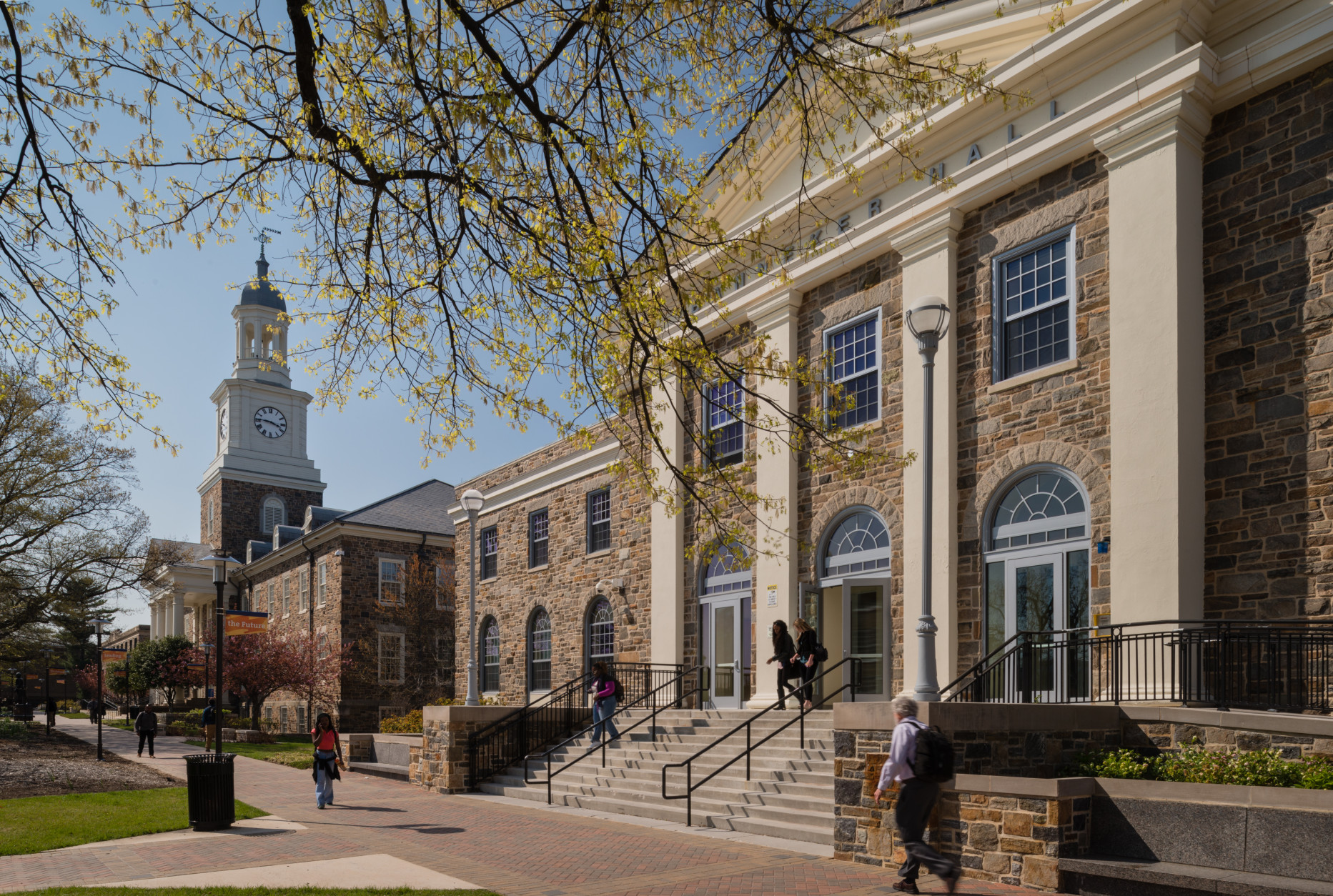
Morgan State University main campus quad, with Holmes Hall clock tower in background
Morgan State University’s history is synonymous with the civil rights struggle in America and the institution played a pivotal role in Maryland during the Jim Crow era. Long before the issue of a “border wall” became prominent in the nation’s political discourse, Morgan State confronted a similar barrier. The college’s move to what was then the outskirts of Baltimore city provoked its white neighbors to erect a wall that ran the length of a campus border so residents would not have to see Black students on the campus. The student body has an activist tradition and early on made its presence felt in the state capital. Dr. Martin D. Jenkins, the president of the college during those tumultuous years, was a highly respected, no nonsense academic who supported his students’ advocacy while burnishing Morgan’s national reputation as a center of Black intellectual capital. Rev. Dr. Martin Luther King Jr. first evoked some of the language he later used in his famous “I Have a Dream” speech during a commencement address at the college.
Despite this illustrious history, Morgan State has always found itself in a fight for survival. In the 1960s Maryland created the University of Maryland Baltimore County (UMBC) in suburban Baltimore County, just outside the city limits. The new college was an attempt to bleed Morgan State dry by replicating academic programs offered at Morgan and literally creating a suburban parallel to make the HBCU irrelevant. And in the process, the state offered Morgan State little support and allowed its campus to decay. By the time the 1960s came to a close, Morgan State was on life support. This practice of siphoning support continued decades later. Rather than awarding Morgan sole authority to offer an engineering program, in the 1980s Maryland granted UMBC the right to offer an engineering program as well.
The university has also never received funding comparable to the state’s white state colleges and in the 1970s saw Towson State University, a neighboring college, just some two miles away in Baltimore County, rise with tremendous support from the state. This occurred at a time when Morgan was receiving not only tepid general support but suspect capital funding that produced several buildings on campus that were literally half-built or poorly designed. It has taken 30 years and strong leadership to replace those structures and provide students with first-class facilities. During the decade, the university also suffered under poor executive leadership that almost caused the institution to go under.

Archirecural rendering of Morgan State library that only had 4 of 8 planned floors constructed
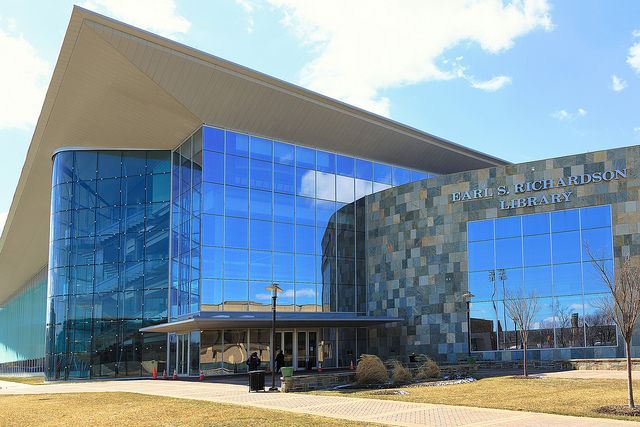
The new Earl S. Richardon Library on the Morgan State campus
The state has continued to engage in deceptive practices such as granting permission to nearby white colleges to replicate academic programs already offered at Morgan State. Such was the case with an MBA program that was created by the University of Baltimore and Towson State University (now Towson University) in 2005, both campuses less than five miles from Morgan State. The duplication siphoned off white students from Morgan’s MBA program.
Though designated Maryland’s “public urban research university,” Morgan State must compete with the University of Baltimore, Towson University, the University of Maryland-Baltimore County (UMBC), it’s sister HBCU Coppin State University and private institutions Goucher College, Loyola University and Johns Hopkins University – all within a 14-mile radius of its campus. The flagship campus of the University of Maryland in College Park is just 45 minutes away in Prince George’s County.
This has been the standard practice in Maryland. The state underfunds its historically Black colleges, allows the duplication of programs at white colleges that already exist on the campuses of HBCUs, and lags in supporting the capital needs of these colleges so its facilities stay in use much longer than their useful lives and students are burdened with antiquated facilities. Whatever ‘new’ that exists on the campus of Morgan State University and its sister HBCUs in Maryland is only there due to the persistent advocacy and struggle of institutional leadership, alumni and allies within Black political leadership in the state.
Morgan State has experienced a renaissance of sorts during the last two decades, first, under the leadership of former president Dr. Earl S. Richardson, for whom the new university library is named, and currently under president Dr. David Wilson, who is shepherding the construction of new facilities, expanding academic programs and forging a global footprint for the university. Still, Morgan remains at a distinct disadvantage to its white peers due to Maryland’s discriminatory practices.
The Legal Battle for Parity
Maryland has been put on notice that its treatment of HBCUs in the state run afoul of constitutionally guaranteed civil rights protections. After devising a plan in 1974 that it claimed would achieve racial parity in higher education, Maryland was told by the U.S. Department of Education Office of Civil Rights (OCR) that the plan was not being implemented properly. OCR threatened to block the state’s share of federal funding for higher education. In response, Maryland filed a lawsuit challenging OCR’s determination and a submitted a revised plan in 1980. That plan was also deemed insufficient by OCR. The two parties – Maryland and OCR – reached agreement on a third plan in 1985 but it is that agreement that is now the subject of a landmark federal lawsuit.
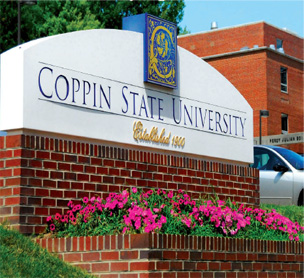 In 2000 the two sides were still attempting to come to some agreement on a plan to elevate the state’s HBCUs, create parity in funding support and program offerings between these schools and Maryland’s white colleges, and eliminate unnecessary and costly program duplication. Maryland entered into an agreement with OCR to do all of the above in addition to examining the needs of Coppin State University in west Baltimore.
In 2000 the two sides were still attempting to come to some agreement on a plan to elevate the state’s HBCUs, create parity in funding support and program offerings between these schools and Maryland’s white colleges, and eliminate unnecessary and costly program duplication. Maryland entered into an agreement with OCR to do all of the above in addition to examining the needs of Coppin State University in west Baltimore.
Subsequently, the state established a Panel on the Comparability and Competitiveness of Historically Black Institutions in Maryland (HBI Study Panel) and submitted a final report with recommendations in November 2008. This was a preemptive move by the state that neither improved the fortunes of its HBCUs or silenced critics who were seeking more comprehensive remedies on the part of the state to address historical disparities in resources between Black colleges and white institutions.
While the HBI Study Panel convened, with promises made by Maryland and subsequently broken, an independent federal lawsuit was filed in 2006 against the state by a collection of HBCU alumni. Formally known as the Coalition for Equity and Excellence in Maryland Higher Education (“the Coalition”) the group originally sought relief in state court but took the case to federal District Court. The Coalition alleged that the state of Maryland was violating Title Vi of the Civil Rights Act of 1964 and the equal protection clause of the 14th Amendment of the United States Constitution by continuing to operate a dual system of higher education that discriminates against students enrolled at HBCUs. In 2013 Judge Catherine E. Blake ruled in favor of the Coalition, finding that Maryland continues to operate a de jure system of higher education. In her ruling Judge Blake noted, “Students who enter Maryland’s historically Black institutions – whether Black, White, or of other races – do not have an equal educational opportunity as those who attend the state’s traditionally white institutions.”
After three years of trying to mediate a remedy, Judge Blake ordered the parties back to court for a remedial trial to determine the proper remedies to satisfy the court’s finding. The remedial trial is currently underway with witnesses being heard in federal court in Baltimore. Support for Morgan State University and the state’s other HBCUs continues to build as alumni have packed the federal courtroom where the case is being heard and most recently Bishop J.L. Carter, the president of the 500 congregation Ministers Conference of Baltimore and Vicinity, pledged that organization’s support.
A Self-Determined Policy Remedy
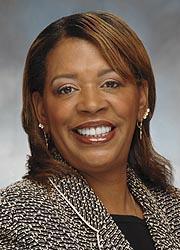 Rather than wait for the court to resolve Maryland’s long-running defiance of the law, State Senator Joan Carter Conway (D-43) (pictured left) is sponsoring legislation, SB-712, that calls for guaranteed supplemental funding to the state’s four Black colleges. The bill is titled the Blount-Rawlings-Britt HBI (Historically Black Institutions) Comparability Program. SB-712 requires the “Maryland Higher Education Commission to provide funds for the Commission to adopt certain standards and procedures; requiring the Governor to provide funds for the Commission to distribute to HBIs; providing for the calculation of the annual operating budget distribution to each of the HBIs; providing for the annual distribution of certain capital funds to the HBIs…” There are 11 co-sponsors of the legislation in the state Senate, representing Baltimore, Baltimore County, Montgomery, Prince George’s and Charles counties.
Rather than wait for the court to resolve Maryland’s long-running defiance of the law, State Senator Joan Carter Conway (D-43) (pictured left) is sponsoring legislation, SB-712, that calls for guaranteed supplemental funding to the state’s four Black colleges. The bill is titled the Blount-Rawlings-Britt HBI (Historically Black Institutions) Comparability Program. SB-712 requires the “Maryland Higher Education Commission to provide funds for the Commission to adopt certain standards and procedures; requiring the Governor to provide funds for the Commission to distribute to HBIs; providing for the calculation of the annual operating budget distribution to each of the HBIs; providing for the annual distribution of certain capital funds to the HBIs…” There are 11 co-sponsors of the legislation in the state Senate, representing Baltimore, Baltimore County, Montgomery, Prince George’s and Charles counties.
The Senate Budget and Taxation Committee held a hearing on SB-712 on March 7 in Annapolis that was attended by alumni of the state’s Black colleges, students and community supporters. Dr. David Wilson, president of Morgan State University, testified in support of the legislation. Wilson was quoted in the Baltimore Afro-American making the case for Conway’s bill. He noted, “We have the highest percentage of contract faculty of any institution in the state. We have a $375 to $400 million-dollar capital backlog.”
SB-712 is intended to provide supplemental funding to HBCUs to support an increase in financial aid to students, the hiring of personnel to maintain faculty and staff ratios called for in the bill, and to mandate that Black colleges receive 35% of the capital improvement resources that are allocated to all state institutions of higher education, exclusive of capital funding for independent colleges and the University of Maryland Medical System.
The legislation is significant because it seeks to codify equity in a way that Maryland can be held accountable for the development of Bowie State University, Morgan State University, the University of Maryland Eastern Shore, and Coppin State University. It also would have a leveling effect by making investments in these institutions that will make them competitive with the state’s traditionally white institutions.
What remains to be seen is the resolution of the Coalition’s equity lawsuit. If a solution is determined that awards Maryland’s HBCUs to the degree to which they have been disadvantaged, it will truly usher in a remarkable period of growth for these institutions. Morgan State University and Maryland’s three other HBCUs are poised to take advantage of the thousands of students who are seeking an affordable, high quality education at a state college. HBCUs have the advantage of being practitioners of diversity at a time when many millennials are seeking inclusive life experiences. If these campuses are provided the resources to expand their academic offerings, develop their research capacity, upgrade their physical plants and build new facilities, and provide more financial aid to students in need, Maryland’s historically Black colleges will be well positioned in the higher education marketplace in the state and nationally.

today in black history
January 06, 2026
In 1989 Rep. John Conyers (D-MI) introduced a resolution calling for reparations to compensate African-Americans for slavery.
MD’s HBCUs Demand Parity
Federal lawsuit and state legislation mark turning point
POSTED: March 16, 2017, 11:00 am



















